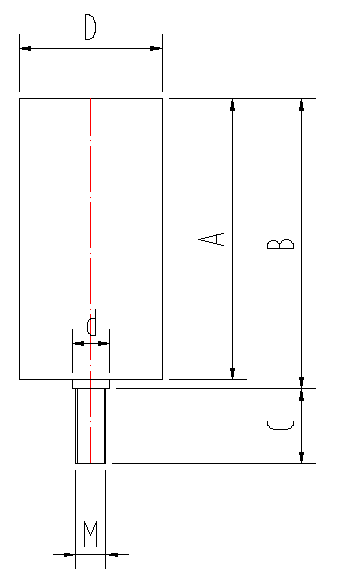 Afrikaans
Afrikaans  Albanian
Albanian  Amharic
Amharic  Arabic
Arabic  Armenian
Armenian  Azerbaijani
Azerbaijani  Basque
Basque  Belarusian
Belarusian  Bengali
Bengali  Bosnian
Bosnian  Bulgarian
Bulgarian  Catalan
Catalan  Cebuano
Cebuano  Corsican
Corsican  Croatian
Croatian  Czech
Czech  Danish
Danish  Dutch
Dutch  English
English  Esperanto
Esperanto  Estonian
Estonian  Finnish
Finnish  French
French  Frisian
Frisian  Galician
Galician  Georgian
Georgian  German
German  Greek
Greek  Gujarati
Gujarati  Haitian Creole
Haitian Creole  hausa
hausa  hawaiian
hawaiian  Hebrew
Hebrew  Hindi
Hindi  Miao
Miao  Hungarian
Hungarian  Icelandic
Icelandic  igbo
igbo  Indonesian
Indonesian  irish
irish  Italian
Italian  Japanese
Japanese  Javanese
Javanese  Kannada
Kannada  kazakh
kazakh  Khmer
Khmer  Rwandese
Rwandese  Korean
Korean  Kurdish
Kurdish  Kyrgyz
Kyrgyz  Lao
Lao  Latin
Latin  Latvian
Latvian  Lithuanian
Lithuanian  Luxembourgish
Luxembourgish  Macedonian
Macedonian  Malgashi
Malgashi  Malay
Malay  Malayalam
Malayalam  Maltese
Maltese  Maori
Maori  Marathi
Marathi  Mongolian
Mongolian  Myanmar
Myanmar  Nepali
Nepali  Norwegian
Norwegian  Norwegian
Norwegian  Occitan
Occitan  Pashto
Pashto  Persian
Persian  Polish
Polish  Portuguese
Portuguese  Punjabi
Punjabi  Romanian
Romanian  Russian
Russian  Samoan
Samoan  Scottish Gaelic
Scottish Gaelic  Serbian
Serbian  Sesotho
Sesotho  Shona
Shona  Sindhi
Sindhi  Sinhala
Sinhala  Slovak
Slovak  Slovenian
Slovenian  Somali
Somali  Spanish
Spanish  Sundanese
Sundanese  Swahili
Swahili  Swedish
Swedish  Tagalog
Tagalog  Tajik
Tajik  Tamil
Tamil  Tatar
Tatar  Telugu
Telugu  Thai
Thai  Turkish
Turkish  Turkmen
Turkmen  Ukrainian
Ukrainian  Urdu
Urdu  Uighur
Uighur  Uzbek
Uzbek  Vietnamese
Vietnamese  Welsh
Welsh  Bantu
Bantu  Yiddish
Yiddish  Yoruba
Yoruba  Zulu
Zulu High-Quality Conveyor Belt Idler Rollers for Efficient Material Handling
Understanding Conveyor Belt Idler Rollers
Conveyor belt systems are essential components in various industries, streamlining the movement of goods and materials from one point to another. A critical part of these systems is the idler roller, which plays a vital role in supporting and guiding the conveyor belt, ensuring efficient operation and prolonging the conveyor's lifespan.
What Are Idler Rollers?
Idler rollers are cylindrical components that are placed at strategic points along the conveyor system. Their primary function is to support the weight of the conveyor belt and the materials being transported. Unlike powered rollers, idler rollers do not drive the belt; instead, they provide the necessary friction and structure to keep the conveyor belt aligned and operating smoothly.
Types of Idler Rollers
There are several types of idler rollers, each designed for specific applications
1. Crowned Rollers These rollers have a slight curvature at the center to help keep the belt centered. The crown ensures that the belt stays aligned, reducing wear and tear.
3. Troughing Rollers These rollers have a special design that allows them to support the conveyor belt in a trough shape. This design is particularly useful for transporting bulk materials, as it helps contain the materials within the confines of the belt.
conveyor belt idler rollers

4. Return Rollers Positioned on the return side of the conveyor, these rollers support the underside of the belt as it returns to the starting point, preventing sagging and wear.
Importance of Idler Rollers
Idler rollers are crucial to the overall efficiency and longevity of a conveyor system. They help reduce friction between the belt and the conveyor frame, which minimizes energy consumption. Properly functioning idler rollers also help maintain the alignment of the belt, preventing misalignment that can lead to increased wear or even system failures.
Moreover, idler rollers need to be durable and resistant to wear since they are constantly subjected to heavy loads and environmental factors like dust, moisture, and temperature fluctuations. Quality materials and regular maintenance are essential to ensure that these rollers perform effectively over time.
Maintenance Considerations
Regular maintenance of idler rollers can greatly enhance the performance and lifespan of the conveyor system. This includes
- Inspection Regularly checking for wear and damage can help catch issues early before they lead to costly downtime. - Lubrication Keeping the bearings lubricated reduces friction and prevents overheating. - Adjustment Ensuring that rollers are properly aligned can prevent belt slippage and misalignment.
In summary, idler rollers are a fundamental element of conveyor belt systems, providing crucial support and influencing the overall efficiency of material handling operations. Understanding their functionality, types, and maintenance needs is vital for optimizing conveyor system performance and ensuring long-term reliability.
-
Revolutionizing Conveyor Reliability with Advanced Rubber Lagging PulleysNewsJul.22,2025
-
Powering Precision and Durability with Expert Manufacturers of Conveyor ComponentsNewsJul.22,2025
-
Optimizing Conveyor Systems with Advanced Conveyor AccessoriesNewsJul.22,2025
-
Maximize Conveyor Efficiency with Quality Conveyor Idler PulleysNewsJul.22,2025
-
Future-Proof Your Conveyor System with High-Performance Polyurethane RollerNewsJul.22,2025
-
Driving Efficiency Forward with Quality Idlers and RollersNewsJul.22,2025





























